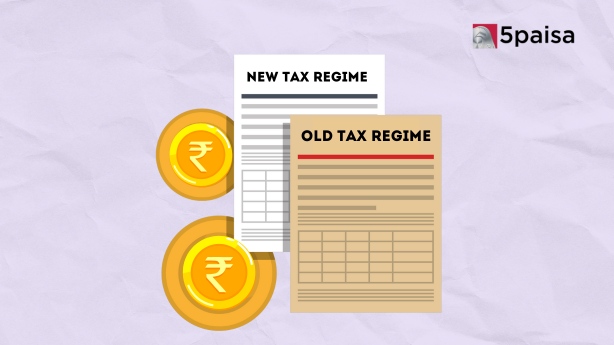3 Technologies Disrupting Finance in 2025: AI, Blockchain & Big Data Revolution
Sms Spoofing

Imagine receiving a text message from your bank asking for your account details or OTP. You might be tempted to share the information without a second thought, considering it's from a trusted source. But what if the message wasn't actually from your bank? This deceptive tactic, known as SMS spoofing, is becoming increasingly common, and it's essential to understand how it works to protect yourself from falling victim to such scams.
What Is SMS Spoofing?
SMS spoofing is a technique that allows someone to alter or "spoof" the sender's information displayed in a text message. It's like wearing a mask to impersonate someone else, but in text messaging. With SMS spoofing, the sender can change the caller ID or the displayed name, making it appear that the message is coming from a legitimate source, such as a bank, government agency, or even a friend or family member.
How Does SMS Spoofing Work?
SMS spoofing is surprisingly straightforward, which is why it is so concerning. In some versions of Kali Linux, a popular operating system for ethical hacking and cybersecurity, there is a built-in tool called the "Social-Engineer Toolkit" (SET), which includes an SMS spoofing attack vendor tool. With this tool, anyone with basic technical knowledge can send a spoofed text message, impersonating any phone number or sender name they desire.
But it doesn't stop there. Some online services and platforms offer SMS spoofing services for a fee, making it accessible to a broader audience. These platforms allow users to enter the desired sender information and send spoofed messages to their targets with just a few clicks. It's concerning that such services are readily available on the internet, enabling even those without technical expertise to engage in this deceptive practice.
Types of SMS Spoofing
SMS spoofing can take various forms to deceive the recipient for personal gain or malicious purposes. Here are some common types of SMS spoofing you should be aware of:
● Fake Sender Identification: This is the most prevalent form of SMS spoofing, where the sender's identity is falsified to appear as a bank, credit card provider, or other legitimate organisation. The goal is often to trick recipients into sharing sensitive information or falling for a scam.
● Harassment: Cyberbullies, pranksters, and stalkers may use SMS spoofing to send intimidating or unwanted messages to their victims, often to extract money or cause emotional distress.
● False Prize Notifications: Scammers send text messages claiming the recipient has won a prize in this scenario. They then request personal or banking information under the guise of facilitating the prize distribution, ultimately leading to identity theft or financial fraud.
● Espionage: Hackers may use SMS spoofing to send links to malicious websites. When the recipient clicks on these links, they are redirected to a website that installs malware, allowing the hackers to gather personal data or access company resources.
Preventive Measures for SMS Spoofing
While SMS spoofing is a concerning issue, there are several preventive measures you can take to protect yourself from falling victim to such scams. Let's explore some practical tips to keep you and your loved ones safe:
● Be cautious of suspicious SMS links and refrain from clicking on them, even if they appear from a trusted source. Instead, contact the legitimate company directly using their official contact details.
● Pay attention to subtle spelling errors or inconsistencies in the sender's name or number. Scammers often intentionally introduce minor changes to trick recipients.
● Be wary of unsolicited text messages that create a sense of urgency or demand immediate action, such as transferring money or providing personal information. Legitimate organisations rarely employ such tactics.
● Check for encryption before clicking on any links. Unencrypted URLs (starting with "http" instead of "https") may indicate a potential scam. Use online URL scanning tools like Google's Virustotal to verify the safety of suspicious links.
● Never disclose sensitive information like OTPs, card details, PINs, or passwords to anyone, even if they claim to be from a reputable organisation. Legitimate companies will never ask for such information via text message.
● Report and block suspicious numbers that appear to be phishing attempts or scams.
Risks and Consequences
While SMS spoofing may seem harmless, it can have severe consequences, particularly when used maliciously. Some of the most common risks and misuses of SMS spoofing include:
● False Sender Company Name: Scammers may impersonate well-known companies or organisations to trick recipients into believing the message is legitimate, potentially leading to financial losses or data breaches.
● Fake Money Transfers: In offline shopping scenarios, fraudsters may use SMS spoofing to send fake bank transfer notifications, duping store owners into releasing purchased items without receiving payment.
● Personal Agenda: SMS spoofing can be used for personal vendettas, such as stalking, harassment, or carrying out pranks against individuals, causing emotional distress or worse.
● Extracting Sensitive Information: Scammers may send spoofed messages prompting recipients to take immediate actions or provide sensitive information, such as login credentials or financial details, leading to identity theft or financial fraud.
Conclusion
In the digital age, where text messaging is a predominant form of communication, SMS spoofing has emerged as a significant threat. By understanding how it works, its various types, and the preventive measures, you can stay vigilant and protect yourself from falling victim to such scams. Remember, caution and awareness can go a long way in ensuring your personal and financial security.
Frequently Asked Questions
Can SMS Spoofing Be Detected?
Are There Legitimate Uses for SMS Spoofing?
Can SMS Spoofing Be Used for Phishing or Fraud?
Yes, SMS spoofing is often used for phishing or fraud, a technique known as "smishing." Smishing involves sending deceptive text messages to trick recipients into sharing personal information, clicking on malicious links to steal sensitive data or spread malware.
Is It Possible to Trace the Origin of a Spoofed SMS Message?
Are There Any Reliable Tools or Services to Prevent SMS Spoofing?
- Flat ₹20 Brokerage
- Next-gen Trading
- Advance Charting
- Actionable Ideas
Trending on 5paisa
Personal Finance Related Articles
Disclaimer: Investment in securities market are subject to market risks, read all the related documents carefully before investing. For detailed disclaimer please Click here.

 5paisa Research Team
5paisa Research Team
 5paisa Research Team
5paisa Research Team
 Sachin Gupta
Sachin Gupta




